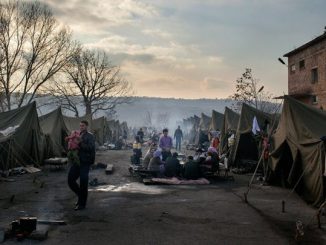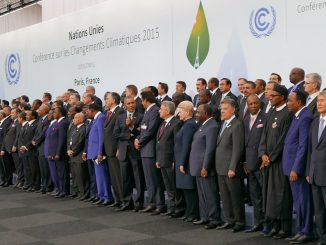This fall, students at college campuses and high schools organized to confront the racism they face at their schools. These protests have often been followed by little response and minimal support for Black students from school administrations at majority white schools. Until, of course, the actions at the University of Missouri. Since then, student protests have gained momentum, with protests at more than 50 schools in the past weeks.
The situation at the University of Missouri gained national attention when Black students refused to accept the administration’s indifference to racism on campus. They identified the symbol of the problem – the president of the University, Timothy Wolfe, who in his arrogance dismissed the students’ demands and the rising tensions on campus.
When members of the football team joined in, the balance of forces changed – but not because of their physical strength. They threatened the only thing that really counts to those who run this system – their profits. Refusing to play the following Saturday would cost the university more than a million dollars, not to mention any lucrative TV contracts they had.
Apparently, as far as the administration was concerned, student security could be ignored, but not the financial security of the university. And when the entire team united behind the first players to step forward, and head coach, Gary Pinkel, supported their actions, it was game over for the administrators. Only two days later, the president of the university and the head of the governing body both resigned.
The response of the football players may seem to have come from nowhere, but there were weeks of student activity leading up to this. At the beginning of the semester, graduate students were notified that their university health benefits would be cancelled while the university was preparing to spend $72 million on the expanding football stadium.
Graduate students responded, organizing their forces across campus and threatening a walkout. A week later, the administration restored the heath benefits but students had already decided on additional demands, like pay for graduate students that was above the poverty line, tuition wavers, affordable housing as well as health care. Graduate students went through with a one-day walkout.
During this time, the head of the student government spread the news that he had racist slurs yelled at him while walking across campus. And there were other incidents reported, including a swastika painted with feces on a residence hall bathroom. The University administration was unresponsive. A graduate student, who had been active in Ferguson following the murder of Michael Brown last year, went on a hunger strike, demanding that the president of the college resign because of his refusal to address the problems of racism on the campus.
If the football players hadn’t decided to stand up and risk their scholarships, who knows what the response would have been. From the graduate student who went on strike to the football players who convinced others to step forward, challenging authority means taking risks. By doing this they learned more in those days of uncertainty about the nature of this society, their own character, and the power of collective action than they could in any classroom or on any field. Schools not only depend on their reputations, but also on their various revenue streams, especially from sports. Those who appear to be all-powerful are in fact vulnerable. For corporations, only when workers anywhere go on strike and threaten the flow of profits, does the threat become real. It is no different in the business of sports.




